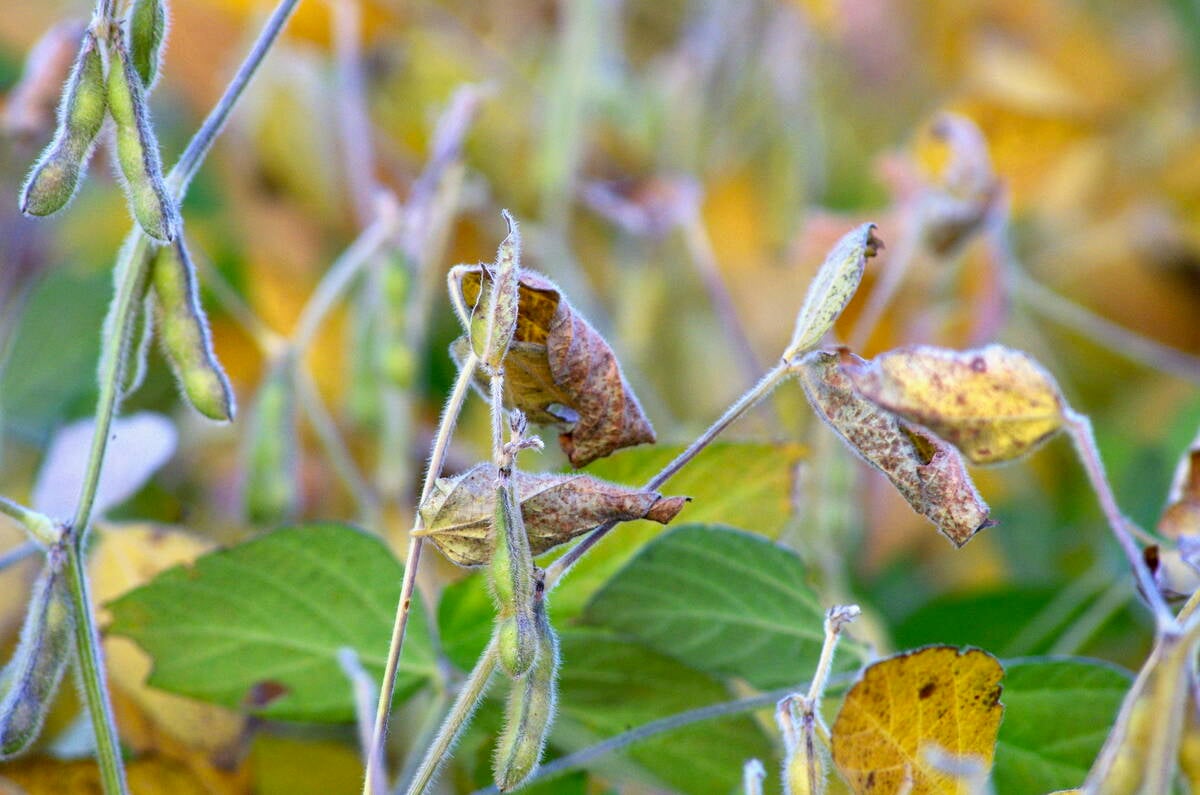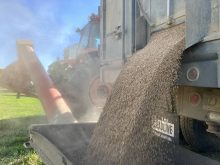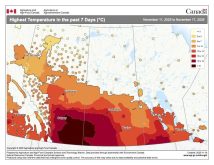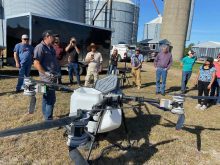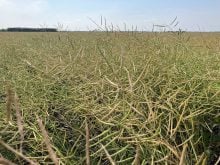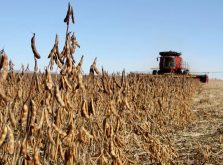Manitoba soybean crops got an unwanted brush of frost in early September, but a provincial expert says fields largely dodged the damage.
The frost wasn’t severe enough or long enough for significant yield losses in the matured soybeans, said Dennis Lange, pulse and soybean specialist with Manitoba Agriculture.
“If there was green leaf material up top, sometimes that protects the lower pods,” Lange said. “So even though it was minus two for three hours, it doesn’t mean it’s going to go right down to the bottom of the plant, either.”
WHY IT MATTERS: An early frost in Manitoba caused minimal damage to most soybean crops, although frost-vulnerable vegetable crops took a hit.
Frost conditions varied significantly across agricultural regions, said the Manitoba Crop Weather Report issued Sept. 7. The Interlake region experienced some of the coldest temperatures, with Narcisse recording -4.2 C for six hours. In the eastern region, Sprague Lake hit -2.7 C for six hours, while Dugald reached -1.2 C for three hours. The central region saw more moderate frost conditions, with locations like Cartwright experiencing -1.4 C for five hours and Baldur recording -0.9 C for five hours.
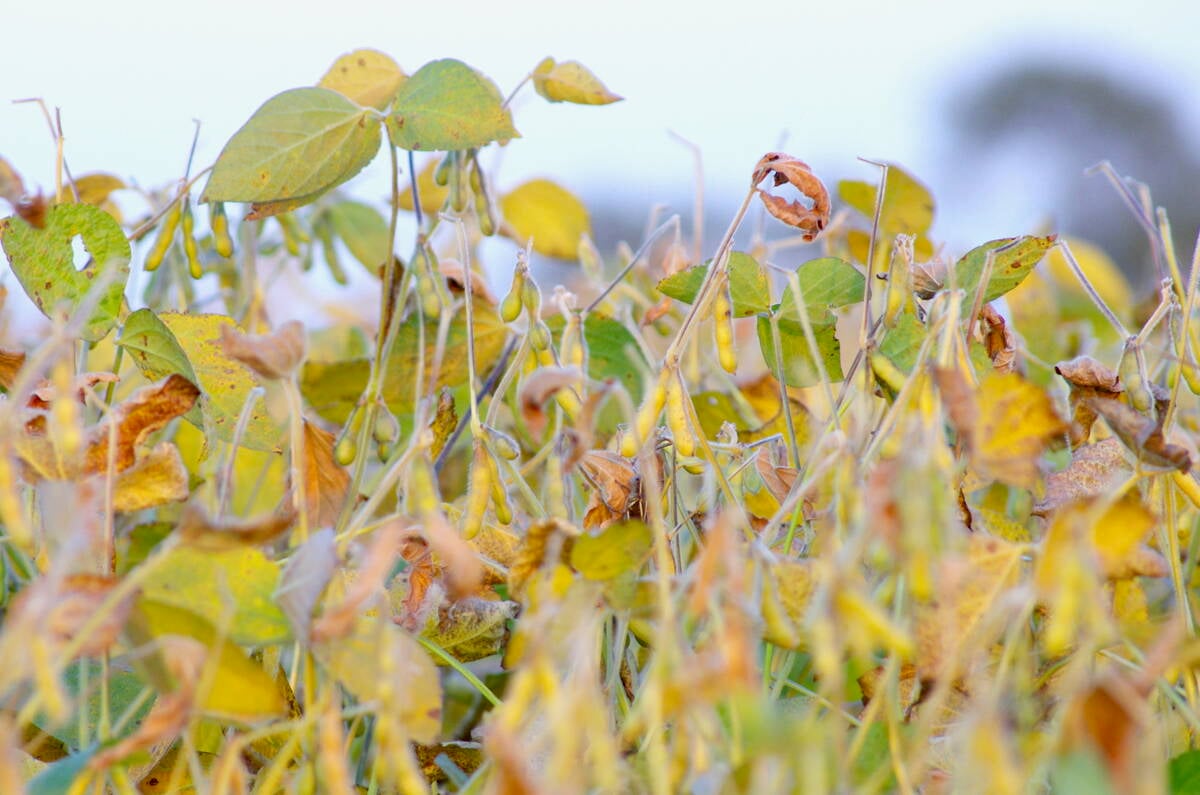
Minimal damage observed
Soybeans in the R6.5 stage, where seeds are fully formed, showed little impact. Lange’s own field, which experienced approximately -1 C for a short period successfully weathered the stress.
“My beans were in that R6.5 stage, almost approaching R7,” he said. “Really, no damage there.”
Soybeans at the R5 stage, where seeds are about eight millimeters long in the top four nodes, are most vulnerable to yield losses from frost. At R6, pods are fully filled, while R7 represents beginning maturity when one pod has reached normal brown coloration.
Plants at the R6 stage could see potential yield losses of up to 50 per cent from severe frost, though that would require much colder temperatures sustained for longer periods than experienced so far in September, Lange noted.
Soybeans across the province were predominantly in the R6 to R7 growth stage, said the Sept. 9 Manitoba crop report. The report did note that frosts had caused leaf discoloration and the onset of leaf drop.
If there ever is a concern about frost damage, Lange suggested grabbing a handful of pods and smelling them to see if there is a fruity smell.
“Then you can kind of tell if those beans have been frozen or not,” he said.

Frost and grading concerns
The main concern for producers may be elevated green seed levels. Frost can lock in the green coloration, Lange said. However, similar frost conditions took place in 2011, and that saw very little green seed in later-maturing crops.
“That pod is pretty thick,” he said. “Even though there was frost in the outside, it really didn’t penetrate the pod.”
For grading purposes, producers are allowed up to three per cent damage in No. 2 Canada soybeans, which includes frost damage.


